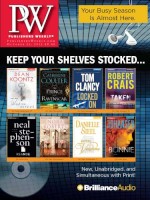At the New England Independent Booksellers Association annual fall conference earlier this month, booksellers and publishers grappled not just with the question of what bricks-and-mortar bookstores will look like in the future, but how long they will continue to exist. As Becky Anderson, moderator and American Booksellers Association president, and co-owner of Andersons’ Bookshop in Naperville and Downers Grove, Ill., said at the outset of the show’s panel “The Bookstore of the Future,” “A lot of us are feeling an urgency that things have got to change. I think we can do a lot to move the needle. We need to look at the big issues. It comes down to more than consignment and dating. There’s millions of ways we put eyeballs on books. How can we be sure those book sales come back to us? We all know the physical book will be here, but how much longer?”
For past ABA president and panelist Gayle Shanks, co-owner of Changing Hands Bookstore in Tempe, Ariz., the issue is that booksellers are already “killing ourselves.” And like many, she has taken steps to monetize as much as she can. For example, Changing Hands’ customers have to buy a book to get a seat at author events, and schools need to purchase at least 35 books if they want the store to arrange an author visit. “The consumer doesn’t have any money. I don’t know how to change the economy. We’re all doing a damn good job. I’m looking for that next level where we can stay alive and save our culture,” she said. Booksellers need to do more than just redefine what they are already doing, Shanks stressed.
Jeff Mayersohn, who purchased Harvard Book Store in Cambridge, Mass., after a career in high tech, remained optimistic about loosening Amazon’s stranglehold on the two keys to attracting consumers: inventory and price. He said that he learned from his high-tech days not to try too hard to predict the future and comforts himself whenever he thinks about Amazon by remembering that 10 years ago AOL dominated online access, PalmPilot was the leading smartphone, and Microsoft ruled the planet. With minimum retail pricing and the Espresso Book Machine to print publishers’ backlists, he added, “We can imagine a value proposition with any book ever printed. The bookstore does become the center of the community.”
Fixed pricing, Anderson added, is responsible for a vibrant bookselling community in many parts of Europe. When it was removed in Switzerland, prices went up and it was reinstated. MRP is currently used by a number of toy companies in the U.S., a practice made easier by a 2007 Supreme Court ruling that MRP is not an automatic violation of the Sherman Antitrust Act. Mayersohn wondered why, given that pricing’s an issue, publishers release lower-priced e-books on the same day as hardcovers. “Whose brilliant idea was that,” he said.
On the publishers’ side, John Mendelson, senior v-p of sales and digital initiatives at Candlewick Press, sees far fewer problems ahead for the children’s side of the business. “Keep doing what you’re doing,” he said. “Children’s represents one of the brightest lights in your stores. We’re in a period of experimentation. We’ve invested heavily in your marketing. We see the independent bookstore and the library as the cornerstones.” Among Candlewick’s programs aimed at bricks-and-mortar stores is a national Find Waldo Local campaign, which it will roll out with ABA next year. The promotion is modeled after one that Eight Cousins in Falmouth, Mass., held this summer in conjunction with 16 local businesses.
Like Mayersohn, HarperCollins exec–turned–World Book Night CEO Carl Lennertz recommended the EBM, especially since the deal that permits printing Harper backlist, as one wave of the future. In response to an audience member’s question about why publishers don’t do more to help booksellers, Lennertz replied, “You’re 8% of the market and you have two-thirds of the author tours and two-thirds of the readers’ copies. Publishers want this all to work.” Shanks disagreed with his read on indies’ market share. “My feeling,” she said, “is maybe we are 80% of some of these books. I believe a lot of what we do [is thought to be due] to Amazon. Publishers have not figured out how it is we kill ourselves and those books become bestsellers.”
But audience member Vicky Uminowicz of Titcomb’s Bookshop in East Sandwich, Mass., raised the one discomforting question in the back of many people’s minds. “We can partner all we want,” she said. “But looking 10 years to the future, if people don’t want books at all, what should our bookstores look like?”



 Volume 258
Issue 43
10/24/2011
Volume 258
Issue 43
10/24/2011





